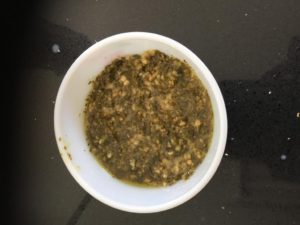
As the term suggests, organic Tea is Tea produced free from chemicals, fertilizers, and harmful pesticides. The ingestion of these chemicals can have a damaging effect in the long run. Hence, organic tea is the best tea for daily consumption. These are in loose leaves form. Due to the recent growing demand of organic tea in Europe, North America, and Japan, some established tea gardens in India, Sri Lanka and China have switched to the natural processes of cultivation.
Other tea producing countries too are following the same trend. The organic tea segment is still a tiny part of the massive tea industry, less than 2% by market size. However, there has been a rise in the number of tea businesses focusing exclusively on “Organic Tea”. This is also because there is a niche market and a segment of consumers is ready to pay a premium for a product that promises to have a favorable effect on their overall wellbeing.
The organic tea market is segmented based on type, Geography, Ingredients used, and health benefits.
The most popular types of Organic Tea are:
- Organic Black Tea
- Organic Green Tea
- Organic Oolong Tea
- Organic White Tea
All the above are obtained from the same tea plant Camellia Sinensis but differ based on the processing, especially oxidization. The taste of each tea type depends on the processing; green tea has a bit of grassy and sweet flavor. Oolong Tea is partially oxidized and therefore has a more flowery and fruity taste. White tea, on the other hand, is the least oxidized and has the most exquisite taste. Black tea is the most oxidized and hence imparts the brown orangish color. Black tea is mostly produced in India and Sri-Lanka and is very popular in the western world. It has a high level of caffeine compared to other forms of tea.
Tea Processing History
Based on the processing and the length of oxidization, the most oxidized tea is the Black Tea, and the tea leaves that go through the least processing is called White Tea. The Oolong and Green Tea are partially oxidized or fermented.
Tea producing Regions History
Tea is mainly produced and exported from China, India, Sri-Lanka, and Kenya. Few South American and African countries are in tea exports too. But more than 70% of tea export contributors are India, China, Sri-Lanka, and Kenya. Japan has emerged as a significant player in Green Matcha tea.
Diverse soils, environments, elevations, drying, and processing techniques can affect the quality and look of a tea. Most companies combine tea and spices or flavors to create a drink that satisfies people’s tastes. For instance, the Chai made of black tea, milk, and spices is celebrated in India and, hence, is most widely produced and sold.
Mostly tea grows in an altitude, but there are differences in the taste based on the elevation level. Low grown teas can be full-bodied, may lack flavor. High grown teas are mostly grown above 1000 meters with the best tastes.
Tea Grading History:
Tea is graded based on Size, Quality, and elevation. It is grown. There is numerous literature on the Grading of Tea. Mainly tea is classified into broken leaves, dust, and fannings. Tea particle dimensions range from dust to fannings and broken grades to loose leaves.
Health Benefits of Tea:
There has been a study conducted in several countries regarding the cancer-fighting properties of tea. Numerous studies have linked better cardio health with tea.Tea drinking, especially oolong tea, can enable lower cholesterols.
Once again, there is numerous literature on the health benefits of tea. Some of the studies that I follow/read.
- Dr. Oz tea benefits
- Webmd.com
- Harvard health
How COVID has impacted the Organic Tea Market Analysis
Growing recognition of the health and environmental benefits from organic tea production, product labeling with organic certification has induced a higher and more competitive price for organic tea products, worldwide.
COVID lockdown in most tea producing countries has impacted the production of organic tea, and though the demand is increasing, supply may get affected.
The tea businesses around the globe are currently observing the deficiency of labor and raw materials due to the epidemic. The Organic Tea development market will experience a shift as the vaccine is in its final trails.
The soaring cost of organic tea compared with regular tea is expected to limit the growth of the organic tea market. The organic tea products charge a premium price. It is mostly because organic tea farming does not include any artificial chemicals, which boosts the production cost. There is a cost to acquiring certification, which is also a factor that makes organic tea more pricey than regular tea. All these factors related to higher cost and increasing demand alongside COVID lockdown may challenge the Tea market.
My understanding about tea keeps growing, thanks to https://www.reddit.com/r/tea/comments/46dl7y/organic_tea/














